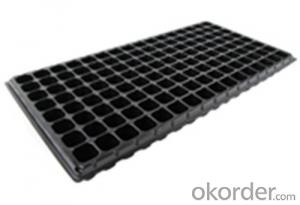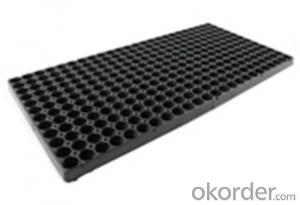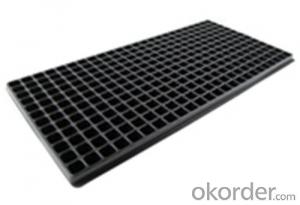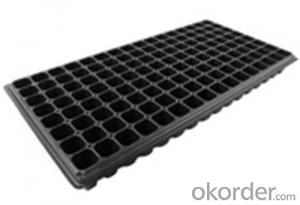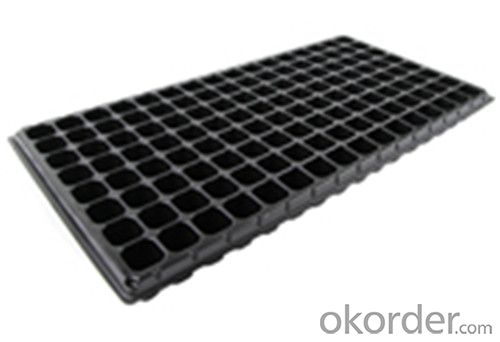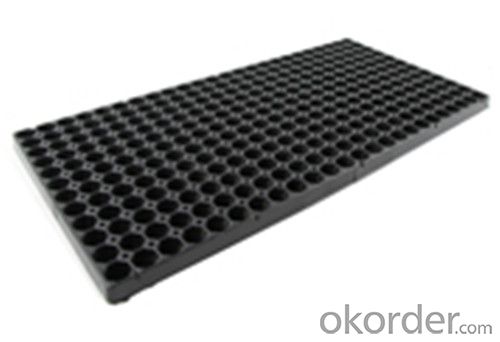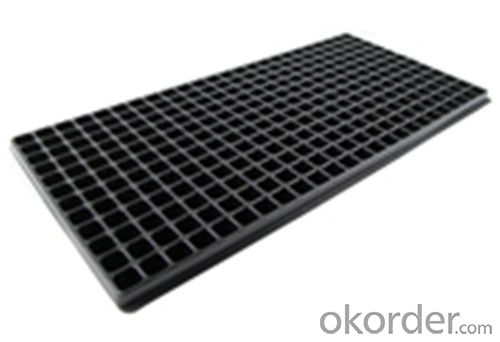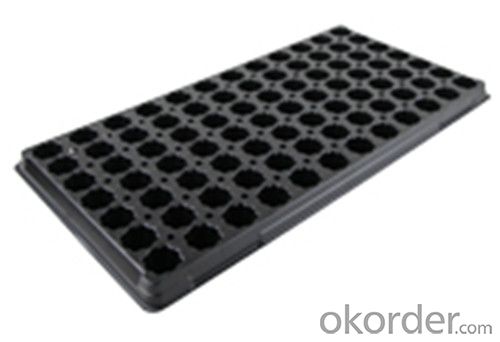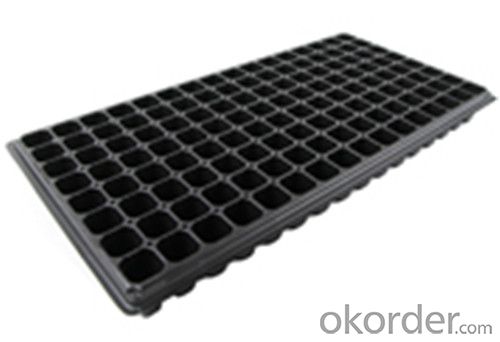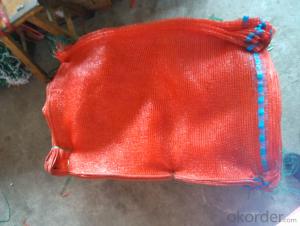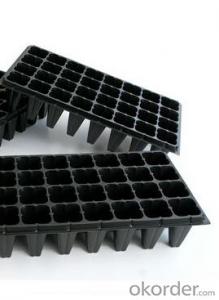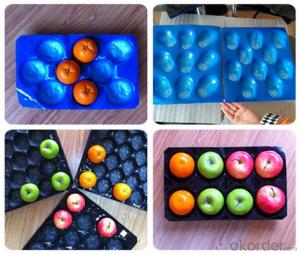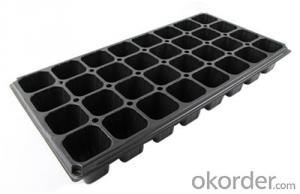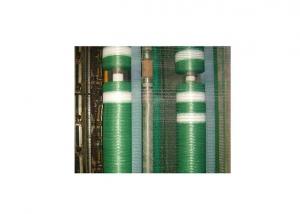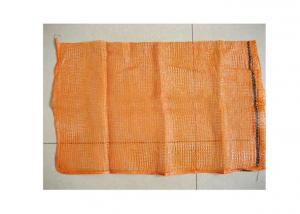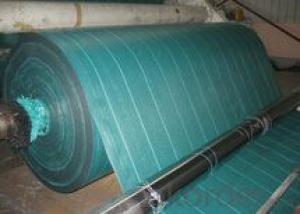Plastic Seed Tray Plug Tray Green House Nursery Plug Tray Square
- Loading Port:
- China main port
- Payment Terms:
- TT OR LC
- Min Order Qty:
- 1000 pc
- Supply Capability:
- 100000 pc/month
OKorder Service Pledge
OKorder Financial Service
You Might Also Like
Structure of the seed tray:
Top quality and competitive price.
Variety design and good appearance.
Easy to use, and remove.
Durable and reusable.
Eco-Friendly.
Description Main Features of the seed tray:
Ideal for Starting seeds and Transplanting Seedling.
Suitable for both manual and automatic planting.
Suitable for Propagating Vegetables, Flowers and other plant from seed in green-house or indoors.
Seed Tray Images:
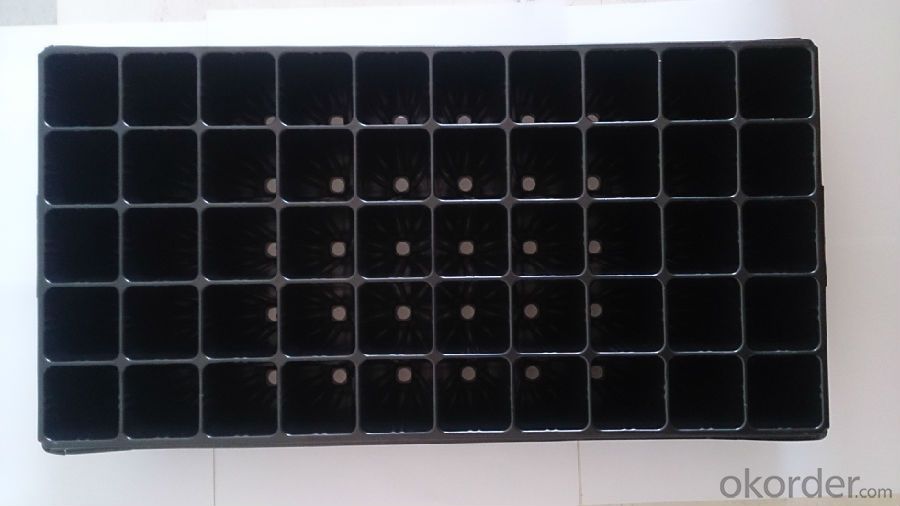
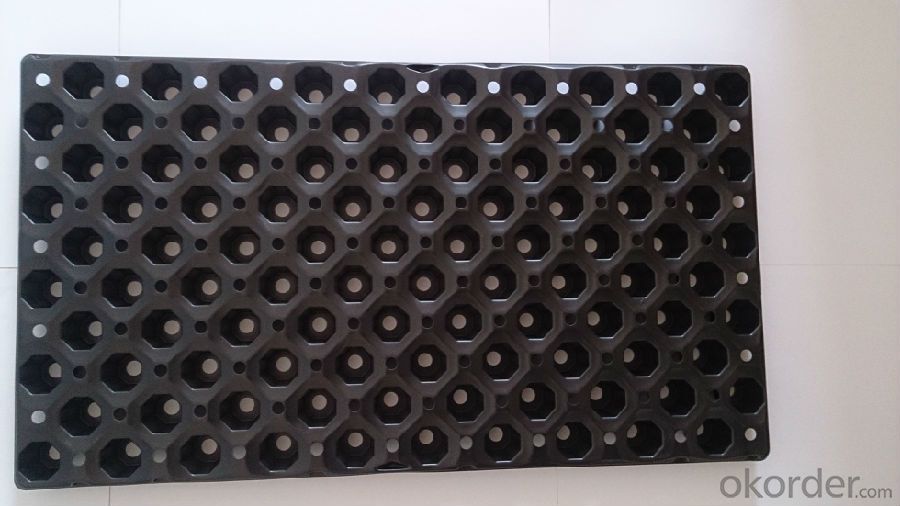
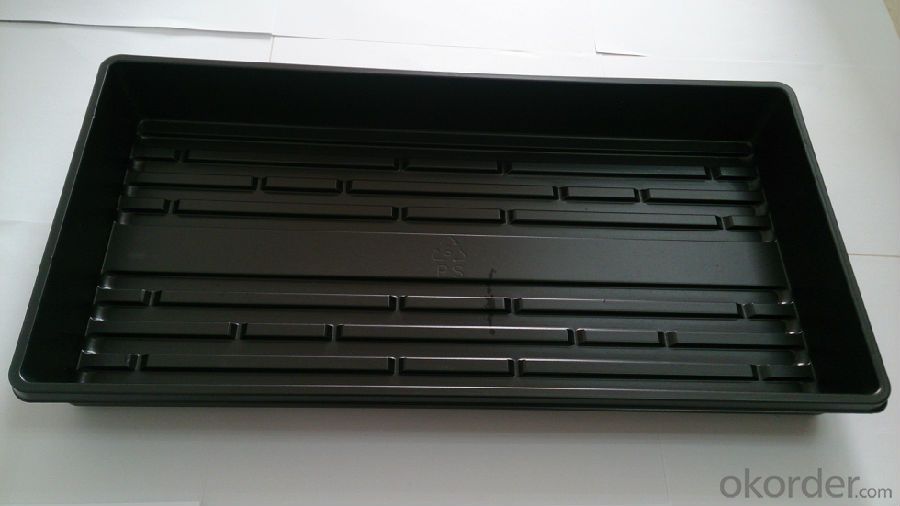
Seed Tray Specification:
Material: HIPS/PVC
Thickness: 0.5mm-1.5mm, Standard:1mm
Weight: 80g(±5)g-230g(±5)g, Standard weight:155g(±5)g
Size: length:490mm-540mm, width:190mm-345mm,depth:25mm-150mm
Standard:54mmX28mm
Cell count: 18-512
Package: carton
Using time: 8-10 times
FAQ:
Q:How Can I Get A Sample?
A:You can get samples by communicate with our export sales.
Q:How Long Is Delivery?
A:Delivery time will be 7-25 days according to order quantity.
Q:What Is The MOQ?
A:Our MOQ is 1*20FT container quantity, allow to mix several items.
Q:What Is Our Normal Payments Terms?
A:Our normal payment terms now is T/T, L/C or Western Union,Papal.
Q:How Do I Order Your Products?
A:You can check our website for any items you interest and you can also get communication with our export sales and order for it accordingly.
Q:What Kinds Of Material We Use In Our Product?
A:Our plastic flower pots use material such as PP polymer or PE polymer.
Thickness vs. Weight
Thickness of trays are from 0.5mm to 1.0mm.
1.0mm: 155g±5g; 100pcs/ctn.
0.9mm: 140g±5g; 120pcs/ctn.
0.7mm: 110g±5g; 150pcs/ctn.
0.6mm: 95g±5g; 180pcs/ctn.
0.5mm: 80g±5g; 200pcs/ctn.
Using time:
thickness of 0.5mm can be used 1 to 2 times.
thickness of 0.6mm can be used 3 to 4 times.
thickness of 0.7mm can be used 5 to 6 times.
thickness of 0.8mm can be used 7 to 8 times.
thickness of 0.9mm can be used 8 to 9 times.
thickness of 1.0mm can be used 8 to 10 times.
- Q: How do agricultural plastic products assist in precision irrigation?
- Agricultural plastic products, such as drip irrigation systems and mulch films, play a crucial role in precision irrigation. Drip irrigation systems deliver water directly to the plant roots, minimizing water wastage and ensuring efficient water distribution. These systems are often made of plastic tubing, which allows for precise control of water flow and distribution. Mulch films, on the other hand, can be used to cover the soil surface, reducing evaporation and maintaining soil moisture levels, thus promoting more efficient water usage. Overall, agricultural plastic products enable farmers to optimize water delivery, conserve resources, and achieve precise irrigation, leading to increased crop yields and improved farming practices.
- Q: Can nursery trays be used for starting succulent cuttings indoors?
- Yes, nursery trays can be used for starting succulent cuttings indoors. The trays provide a convenient and organized way to propagate succulents from cuttings, allowing for easy monitoring and care. However, it's important to ensure that the trays have proper drainage to prevent waterlogging, as succulents are prone to root rot.
- Q: How does ground cover impact the growth of nearby herbs?
- Ground cover can have both positive and negative impacts on the growth of nearby herbs. On one hand, ground cover can provide protection from extreme temperatures, reduce soil erosion, and conserve moisture, which can promote healthier growth of nearby herbs. On the other hand, if the ground cover is too dense or invasive, it may compete with herbs for resources like sunlight, water, and nutrients, leading to stunted growth or even death of the herbs. Therefore, the choice of ground cover should be carefully considered to ensure it is compatible with the growth requirements of the nearby herbs.
- Q: How does agricultural plastic affect crop transpiration rates?
- Agricultural plastic can significantly impact crop transpiration rates. When plastic mulches are used, they act as a barrier that reduces water evaporation from the soil, thus decreasing crop transpiration. This can lead to water conservation and increased crop water-use efficiency. Additionally, plastic covers or tunnels can create a microclimate that reduces wind speed and prevents water loss through evaporation, further minimizing crop transpiration rates.
- Q: How does agricultural plastic affect crop maturity uniformity?
- Agricultural plastic can positively impact crop maturity uniformity by providing a controlled environment that protects crops from extreme weather conditions, pests, and diseases. The plastic acts as a barrier, regulating temperature and humidity levels, ensuring optimal growing conditions. This helps crops grow at a more consistent rate, leading to improved maturity uniformity.
- Q: What are the different types of plastic buckets used in aquaculture?
- There are several types of plastic buckets commonly used in aquaculture, including polyethylene (PE) buckets, polypropylene (PP) buckets, and polyvinyl chloride (PVC) buckets. These buckets are chosen for their durability, resistance to corrosion, and ability to withstand various chemicals and harsh aquatic environments. PE buckets are lightweight and cost-effective, commonly used for tasks like feeding, transporting, and storing fish. PP buckets are known for their high heat resistance and are often used for water treatment processes. PVC buckets are ideal for heavy-duty applications such as holding larger fish or storing equipment. Each type of plastic bucket has its own specific advantages and is selected based on the intended use in aquaculture operations.
- Q: sorry but i melted little plastic on top of my toaster oven earler and how do I clean it off. its brand new. I only had it for a month.it plastic from out coffee fileters. please tell me.
- Hi, try some spray oil, and leave it for an hr, then attempt to gently scape it again, or, put some hot water in it and then heat it until it boils/simmers, during this time, gently scrape. I believe this will solve your prob. ...otherwise, switch on your fan and melt it off, but only as a last resort. O.K? Chris...
- Q: Can ground cover plants be used to create a fire-resistant landscape?
- Yes, ground cover plants can be used to create a fire-resistant landscape. Ground cover plants that are low-growing, have high moisture content, and are less likely to ignite can act as a natural fire break, reducing the spread of flames. These plants can also help retain moisture in the soil, preventing it from drying out and becoming more susceptible to fire. Additionally, ground covers can help prevent the accumulation of dry, combustible materials such as dead leaves and fallen branches. Therefore, incorporating fire-resistant ground cover plants into a landscape design can help minimize the risk and impact of wildfires.
- Q: What are the environmental pollution in plastic products factory?
- Potential hazards". When the waste plastic packaging enters the environment, it is difficult to degrade, resulting in long-term and deep ecological environmental problems. First of all, waste plastic packaging mixed in the soil, affecting crops to absorb nutrients and water, will lead to crop failure;
- Q: What types of plastic containers are used for storing agricultural chemicals?
- Plastic containers commonly used for storing agricultural chemicals include high-density polyethylene (HDPE) jugs, drums, and tanks.
Send your message to us
Plastic Seed Tray Plug Tray Green House Nursery Plug Tray Square
- Loading Port:
- China main port
- Payment Terms:
- TT OR LC
- Min Order Qty:
- 1000 pc
- Supply Capability:
- 100000 pc/month
OKorder Service Pledge
OKorder Financial Service
Similar products
Hot products
Hot Searches
Related keywords

